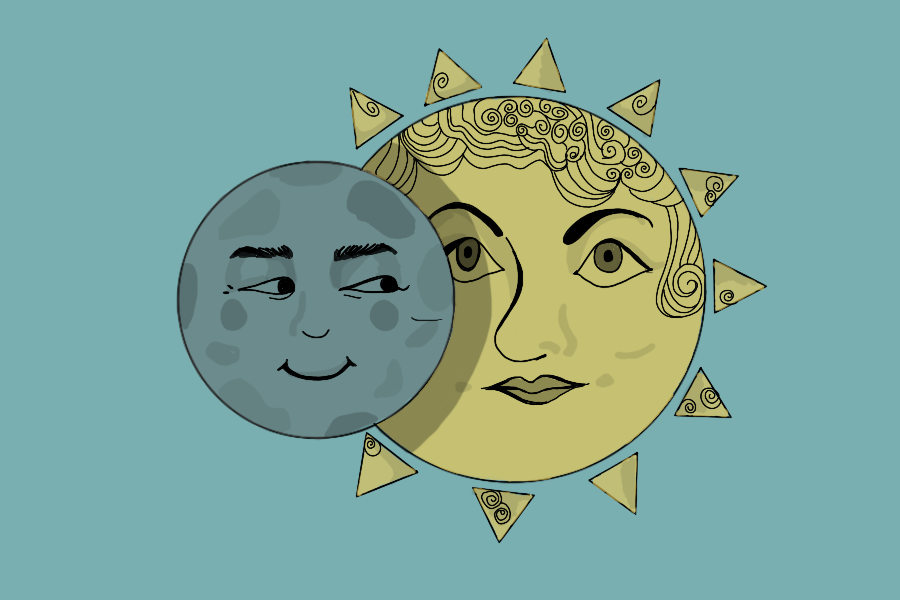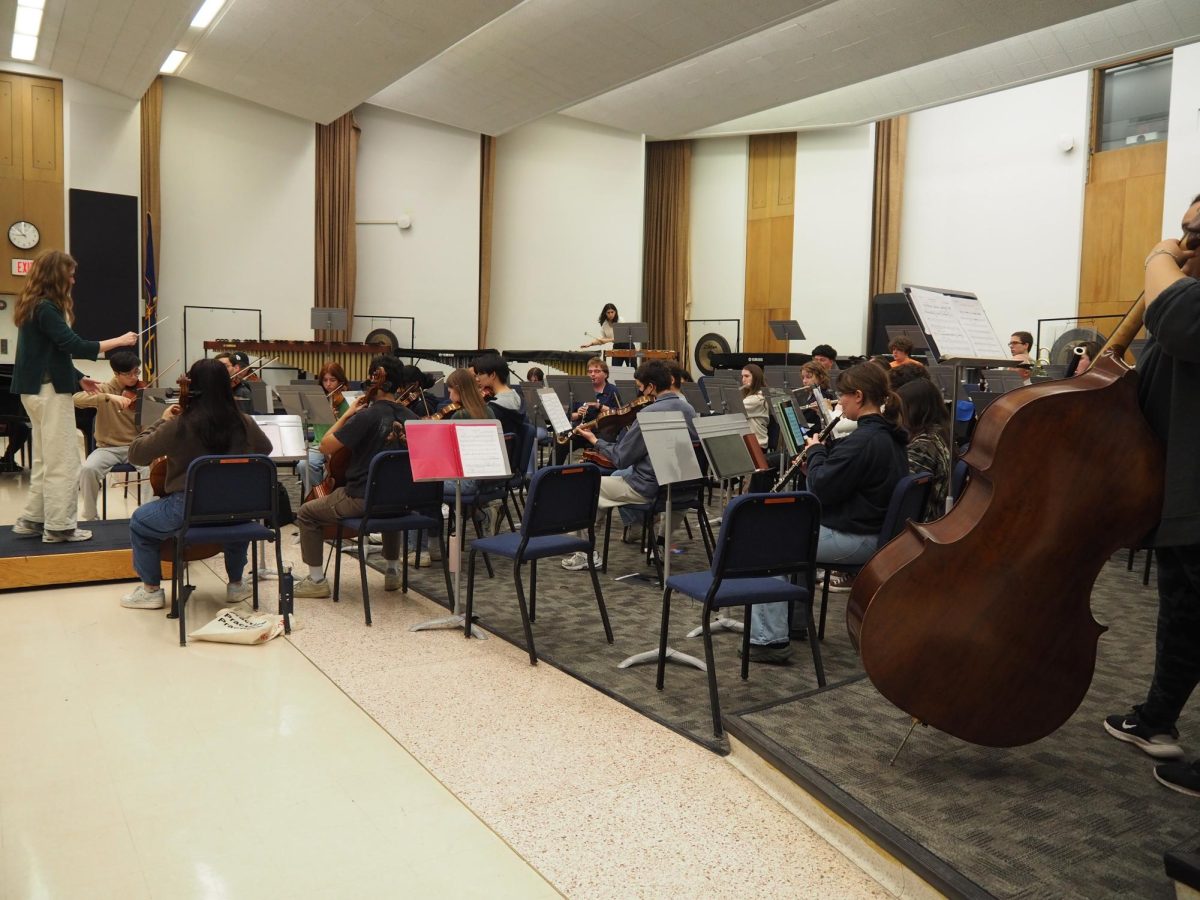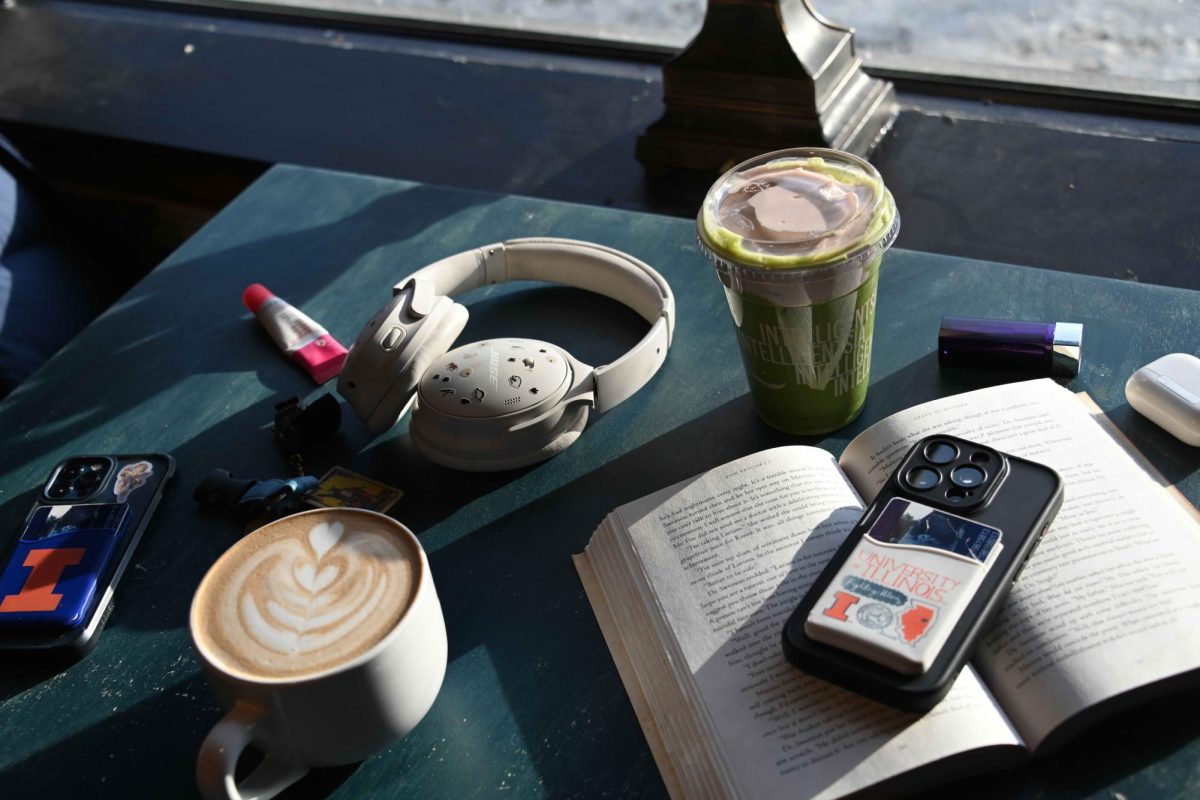The first total solar eclipse to grace the North American continent since 2017 will sweep across the nation Monday, April 8, at around 2:05 p.m. in Champaign-Urbana. While not in the path of totality, the C-U community will see around 97.9% coverage, with totality visible as close as Paris, Illinois.
According to NASA, a total solar eclipse occurs when the moon passes between the sun and the Earth, blocking the sun’s rays. With the once-in-a-lifetime experience on the horizon, C-U residents are finalizing their plans to see the spectacle in action.
“I think a lot of people like showing a lot of commotion for the eclipse,” said Aadarsh Nair, freshman in LAS. “I think people like commotion. They like to have something to look forward to.”
The eclipse offers opportunities for people to spend some quality time together. From picnic watch parties to road trips to totality, many students are coming together to see the event.
“There’s a social aspect to it as well. It’s a communal gathering, you can make a day out of it,” Nair said.
Get The Daily Illini in your inbox!
Many students are also taking the eclipse as an opportunity to spend time with friends and family and travel to an area of totality.
“My dad and sister are driving down Sunday, and they’re gonna pick me and my brother up and we’re gonna go to Shiloh, Illinois where my aunt has a lake house,” said Colin Manion, freshman in Engineering. “Whenever it’s about to pass through Southern Illinois we’re gonna just put on the glasses and watch it get dark out.”
While traveling to the path of totality seems to be the choice for many C-U residents, there are still viewing options within the Champaign area. Specifically, the University’s Department of Astronomy will be offering an observing station for those who decide to stay on campus.
“I do know that the total in Champaign is near 98%. I’m definitely gonna sit outside and watch,” said Anya Maheshwari, sophomore in Engineering. “I’m excited, it will be truly significant. It’s a scenario I haven’t seen and won’t see again until I’m 60 years old.”
The Department of Astronomy will be set up behind Foellinger Auditorium from around 1-3 p.m. on April 8. Attendees will have the opportunity to see the sun through a small telescope, and the department will provide free eclipse glasses while supplies last.
“I’m opting to take a train,” said Myra Stevens, sophomore in FAA. “With everyone traveling to see the eclipse, the roads can get pretty dangerous. Plus, there’s the added benefit of being environmentally conscious.”
In the vein of being safe for the eclipse, viewers should invest in eclipse glasses. These are glasses that block UV light from the sun, so normal sunglasses will not suffice.
“I’ve seen a lot of fake glasses going around. Why would people do that?” Stevens said. “It’s just a way to capitalize off an important event that people care about.”
One of the more interesting things the eclipse has sparked is a variety of conspiracy theories, ranging from giants to locusts.
“The world’s gonna end! I saw that,” Manion said. “I’ve been reading them a lot and they’re certainly interesting. I’m a little nervous.”
Others are not quite as swayed by the conspiracy theories.
“I think that it’s all a little silly,” Maheshwari said. “I’m not worried about anything crazy happening.”
For more information on how to see the eclipse, readers can check the NASA website and the University Department of Astronomy website. Readers who plan to stay in Champaign should navigate to the page about the observing station. Clear skies!







